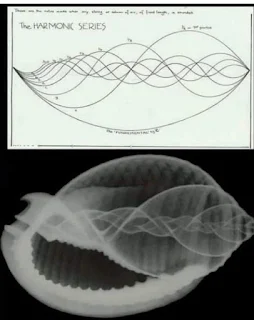"Purusham sasvatam divyam adi-devam ajam vibhum" from the Bhagavad Gita:
Eternal Divine Purusha: Understanding the Line "Purusham Sasvatam Divyam Adi-devam Ajam Vibhum"
The Bhagavad Gita, a profound spiritual text, contains numerous verses that encapsulate the essence of Hindu philosophy and spirituality. Among these, the line "Purusham sasvatam divyam adi-devam ajam vibhum" stands out for its rich meaning and the depth of its implications. This verse can be found in Chapter 11, Verse 18, where Arjuna is witnessing the universal form of Lord Krishna.
Sanskrit:
त्वमक्षरं परमं वेदितव्यं त्वमस्य विश्वस्य परं निधानम् |
त्वमव्ययः शाश्वतधर्मगोप्ता सनातनस्त्वं पुरुषो मतो मे ||
Transliteration:
tvaṁ akṣaraṁ paramaṁ veditavyaṁ tvaṁ asya viśvasya paraṁ nidhānam
tvaṁ avyayaḥ śāśvata-dharma-goptā sanātanas tvaṁ puruṣo mato me
Translation:
"You are the Supreme, Imperishable, the Ultimate Truth to be known. You are the support of all the worlds. You are the eternal guardian of the everlasting dharma. You are the Ancient, Eternal Purusha."
Breaking down the key terms in the line "Purusham sasvatam divyam adi-devam ajam vibhum" provides a deeper understanding of its significance:
1. Purusham (पुरुषम्) The term 'Purusha' denotes the Cosmic Being or the Supreme Person. In the context of the Gita, it represents Lord Krishna as the Supreme Consciousness that pervades the entire universe. The Purusha is the eternal observer and the ultimate reality behind the manifested world.
2. Sasvatam (शाश्वतम्)This word means eternal or everlasting. It underscores the timeless nature of the Purusha, indicating that the Supreme Being is beyond the constraints of time and is forever unchanging.
3. Divyam (दिव्यम्)The term 'Divya' means divine or transcendent. It signifies the sublime, spiritual nature of the Purusha, who is beyond the material realm and its limitations.
4. Adi-devam (आदि-देवम्)Adi-deva' means the original or primeval deity. This emphasizes that the Purusha is the source of all gods and the first cause of everything that exists. The Purusha is the primordial being from whom all creation springs.
5. Ajam (अजम्)Aja' means unborn. It highlights the Purusha's nature as uncreated and self-existent. Unlike beings who are born and die, the Purusha is beyond birth and death, existing eternally.
6. Vibhum (विभुम्) This term means all-pervading or omnipresent. It denotes the infinite presence of the Purusha, who exists everywhere and in everything, permeating the entire cosmos.
The Philosophical Significance
This line encapsulates the core of Vedantic philosophy, which views the Supreme Being as both immanent and transcendent. The Purusha is not only the underlying reality of the physical universe but also transcends it, existing beyond the dualities of creation and destruction, birth and death.
In the Bhagavad Gita, Lord Krishna reveals his universal form (Vishvarupa) to Arjuna, demonstrating that he is the ultimate source and sustainer of everything. Arjuna's recognition of Krishna as "Purusham sasvatam divyam adi-devam ajam vibhum" signifies his understanding of Krishna's true nature as the Supreme Divine Personality who governs the universe with eternal and unchanging principles.
The Relevance to Devotees
For devotees, this verse serves as a reminder of the divine nature of the Supreme Being. It inspires reverence and devotion, encouraging them to seek a deeper connection with the eternal and all-pervading Purusha. Recognizing the Supreme as both the immanent reality within all and the transcendent force beyond, devotees are called to live in accordance with the eternal dharma and to see the divine presence in all aspects of life.
Conclusion
The line "Purusham sasvatam divyam adi-devam ajam vibhum" from the Bhagavad Gita is a profound declaration of the nature of the Supreme Being. It encapsulates the essence of the Purusha as eternal, divine, the original source of all, unborn, and all-pervading. This understanding forms the foundation of spiritual knowledge and devotion, guiding seekers towards a deeper realization of the ultimate truth and the eternal presence of the Divine in the universe.
